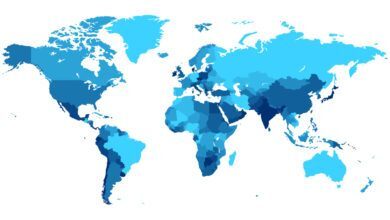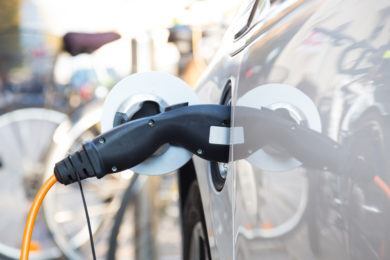The growth of the electric vehicle market is not only beginning to have a noticeable impact on the automobile industry but the metals market as well. In fact, one of the most affected may be the recycling industry.
As of December 2017, cumulative sales of highway-legal plug-in electric vehicles in the U.S. totaled 764,666, representing 28.1 percent of the global light-duty plug-in stock. The U.S. had the world’s third largest stock of plug-in passenger cars after China and Europe. Researchers predict that more than 90 percent of all passenger vehicles in the U.S., Canada, Europe, and other wealthy countries could be electric by 2040.
Mining and Metals
Around the world, mining and metals processing companies are paying close attention to the growing trends toward the use of lighter, yet stronger, metals along with the increasing use of lithium, cobalt, graphite, manganese, and what are classified as rare earth elements (REE).
Because of the increasing value of these metals and elements, mining operations are diligently working to squeeze every particle of usable product from each scoop of earth. In fact, General Kinematics is working closely with mining and processing companies and has made great strides in the development of vibratory equipment that extracts and removes desired material from waste.
The production of electric vehicles, like a variety of other high-tech applications, necessitates the use of critical metals, including rare earth elements (REE). Electric vehicle batteries are predominantly lithium-ion batteries, (e.g., NCA, NMC7), which use lithium, cobalt, nickel, and graphite. In addition, electric motors include a group of 17 REE chemical elements which are, despite their name, not especially scarce resources but are available in only small amounts dispersed on the Earth’s crust.
Most electric vehicles (except Tesla) use neodymium iron boron permanent magnets (NdFeB), which are essential to produce high-performance electric motors. Such magnets contain neodymium (Nd), praseodymium (Pr), and dysprosium (Dy).
However, based on known geologic reserves and security of supply issues, the US Department of Energy identified a risk of supply constraints for neodymium and dysprosium, two main components of electric magnet rotors. In 2015, half of the global demand for REE was for the manufacturing of electric motor magnets. Because many of the elements used in electric vehicles are so dense, the engines and the batteries are a combined 20 to 30 percent heavier than the normal combustion engines and fuel tanks.
To counter this weight disadvantage, automobile manufacturers are working to develop lightweight metals similar to aluminum that will replace steel and allow cars to travel further on less power.
However, steelmakers are fighting back. AK Steel has teamed up with General Motors Co. to try to use nanotechnology to make lightweight vehicle bodies. ArcelorMittal and Tata Steel Europe are also among those developing lighter, stronger alloys to fend off the competition.
Additional Metal Use
Another metal struggling to cope with the possible end of the combustion engine is platinum. Almost half the precious metal used in the last few years, 38 percent, was sold to the auto industry for use in catalytic converters to curb diesel pollution. Another 20 percent of the platinum was sold for other industrial uses, and surprisingly, only 41 percent was used for jewelry and investment purposes.
As the usage of other metals increases so too does the cost to purchase these metals. Cobalt has surged 70 percent on the London Metal Exchange in 2017, after jumping 37 percent in 2016. Lithium prices have extended gains in recent years and copper is also up 14 percent in 2017 on signs of resurgent economic growth.
Not only is copper an essential element in the electric vehicles, which contain about three times more of the metal than regular vehicles, demand has also increased due to the installation of electric charging stations around the world. Estimates are that copper demand in vehicles could double by 2035 compared to current production. This demand increase would require new mining capacity, leading to possible timing issues given that it can take up to 30 years between finding a copper deposit and producing the metal at scale. This is expected to create opportunities linked to exploration, smelting, and refining that will require up to $1 trillion in new investment by mining companies.
Where are critical metals currently found?
Most of the known reserves of lithium are in Bolivia and Argentina (9 million tons), Chile (7.5 million), Australia (more than 2 million) and China (more than 7.5 million). Current lithium mining takes place today mostly in Australia (14,300 tons) and Chile (12,000 tons). The so-called South-American triangle has the most extensive lithium reserves – still largely untapped – and could benefit tremendously from the soaring demand for Li-ion batteries.
Nickel is mostly found in laterite and sulfide deposits. The biggest producers in 2016 were the Philippine (500,000 tons), Canada (255,000 tons), and Australia (206,000 tons). The Democratic Republic of Congo (DRC) provides 26.65 percent of worldwide cobalt production. In 2016, China was the world’s leading consumer of cobalt, with 80 percent of its consumption used to manufacture batteries. The disproportionate weight of the DRC in the worldwide cobalt production and its political instability could lead to supply risks if cobalt sourcing is not diversified in the future.
The graphite used in anodes comes exclusively from China which also supplies about 80 percent of the available rare earth minerals. This lack of diversified supply is a concern of U.S. and world product producers who are keeping an eye on the political stage and trade policies with the Chinese government.
So What Does this All Mean?
While the high demand and small supply of many metals and REEs make the processing a very lucrative business, the environmental impact has become a major concern. More than 20 nickel mines had to shut down in the Philippines and last year and Russian company Norilsk nickel closed its most polluting mine, admitting that a spillage at its plant had contaminated a local river.
One of the key winners in the battle for metals supply and the key to a cleaner environment could be the recycling industry. Although recyclers may not see immediately increased profits, since many end-of-life products containing metals and REE will not enter the market for more than a decade, the early preparation and fine-tuning of recycling capabilities could prove to be a boon in the long run. The key to their success will be the extraction of REEs, lithium, cobalt, and other superalloys from batteries and other parts of electric vehicles.
As new process and environmental challenges emerge, General Kinematics is uniquely positioned to help you create new solutions to solve the most difficult process problems and increase overall recovery rates.
We have pioneered the application of vibratory separation through products and equipment such as our Indirect Cooler for hygroscopic materials and FINGER-SCREEN™ Primary Screen. Both efficiently sort and separate recyclables using low energy and low maintenance requirements. To learn more about GK or any of our state of the art equipment, contact us today!









